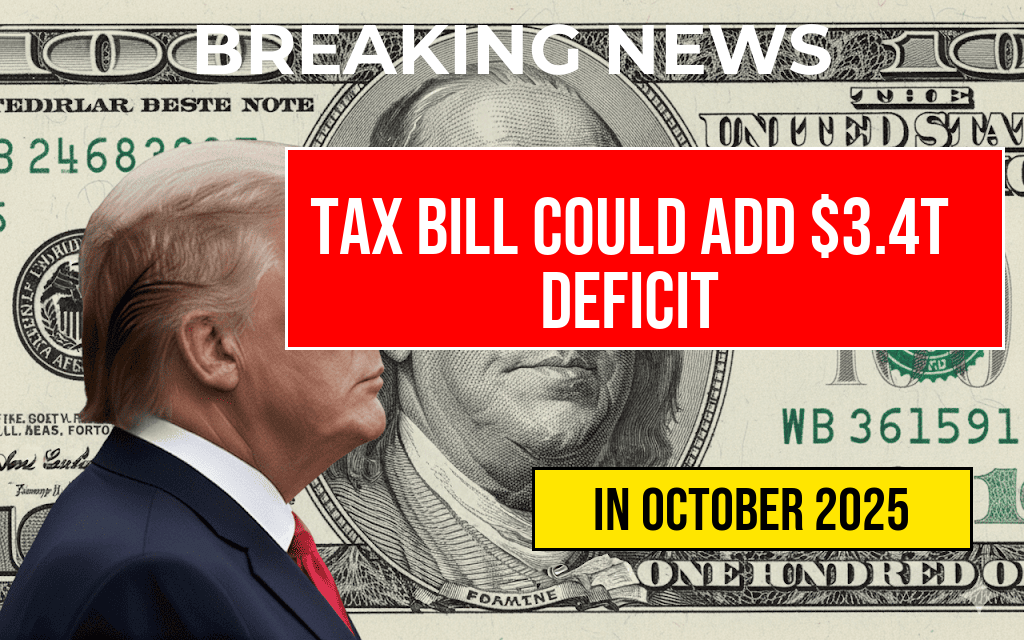The American middle class faces an uncertain economic future as new policy proposals threaten to reduce household incomes by an estimated $1,300 in 2027. Analysts warn that recent legislative shifts could erode decades of income growth, potentially pushing millions of families closer to financial instability. The projected decline stems from a combination of tax reforms, changes in social programs, and regulatory adjustments that are expected to tighten disposable income margins for middle-income earners nationwide. Experts emphasize that, while some policies aim to address budget deficits or fund infrastructure projects, their broader impact may disproportionately burden middle-class households, raising concerns about widening economic inequality and social mobility.
Key Policy Changes and Their Expected Impact
Tax Reforms and Revenue Adjustments
- Increased tax rates on middle-income brackets: Proposed adjustments could raise marginal tax rates by approximately 2-3%, decreasing take-home pay for many families earning between $50,000 and $100,000 annually.
- Reduction in tax credits: Cuts to child and earned income tax credits are anticipated to lower refundable credits, which currently provide significant relief for working families.
- Elimination of certain deductions: Revisions to mortgage and state/local tax deductions may increase taxable income, reducing net income for middle-class homeowners.
Changes in Social Program Funding
- Adjustments to social safety nets: Proposed caps or reductions in funding for programs such as Medicaid, SNAP, and housing assistance could increase out-of-pocket expenses for middle-income households relying on these services.
- Retirement and healthcare reforms: Potential modifications to Medicare and Social Security benefits may lead to higher out-of-pocket healthcare costs, further squeezing household budgets.
Regulatory and Economic Factors
- Interest rate hikes and inflation: Ongoing monetary policy adjustments aiming to curb inflation could raise borrowing costs, impacting mortgage rates and consumer credit, thereby reducing disposable income.
- Labor market shifts: Automation and offshore manufacturing may suppress wage growth, compounding the income strain caused by policy changes.
Projected Economic Consequences
Income Trends and Wealth Distribution
| Income Bracket | Current Median Income | Projected Reduction | New Median Income (2027) |
|---|---|---|---|
| $50,000–$75,000 | $62,000 | $1,300 | $60,700 |
| $75,000–$100,000 | $87,000 | $1,300 | $85,700 |
Experts warn that this decline could exacerbate existing wealth disparities, as middle-class households typically have less capacity to absorb financial shocks compared to upper-income groups. The reduction in disposable income may lead to decreased consumer spending, impacting small businesses and local economies, especially in suburban and middle-market communities.
Social and Political Implications
As household finances tighten, political debates around social safety nets and tax policies are expected to intensify. Advocacy groups argue that these changes could undermine decades of progress toward economic mobility, particularly affecting families striving to save for education, healthcare, and retirement. Conversely, policymakers emphasizing fiscal responsibility contend that these measures are necessary to ensure long-term economic stability.
Expert Perspectives and Broader Context
Economic Analysts’ Viewpoints
Economists from institutions such as the Federal Reserve suggest that while targeted reforms can promote fiscal sustainability, their implementation must be carefully balanced to avoid disproportionate hardship on middle-class households. Dr. Laura McKinney, an economist at the Urban Institute, notes, “Policy shifts that significantly cut into household income could slow economic growth and increase inequality if not accompanied by targeted support measures.”
Historical Context and Future Outlook
Historically, periods of fiscal tightening have often resulted in short-term economic contractions, but the current scenario presents a more complex picture with multiple overlapping reforms. Persistent income reduction could influence consumer confidence and savings rates, potentially leading to a slower recovery from recent economic disruptions. As policymakers debate these changes, the focus remains on balancing fiscal responsibility with social equity.
Resources for Further Reading
Frequently Asked Questions
What is the main concern regarding the middle class in the upcoming policies?
The main concern is that new policies could significantly reduce the average income of the middle class by approximately $1,300 in 2027, potentially threatening their financial stability.
How might these new policies impact the average income of middle-class families?
The policies are expected to impose measures that could lead to a decrease in income for middle-class households, primarily through increased taxes or reduced benefits, resulting in a potential $1,300 loss on average.
What specific policies are contributing to this projected income reduction?
While the article does not specify all policies, it highlights that reforms targeting taxation, social programs, and wage regulations are likely to be the main factors contributing to the projected income decline.
Who will be most affected by these policy changes?
The middle class will be most affected, as they typically rely on stable income sources and benefits that may be reduced under the new policies, potentially widening economic inequality.
Are there any potential solutions or measures to counteract these negative impacts?
Potential solutions include policy adjustments, targeted tax relief, and social support programs aimed at protecting middle-income earners and maintaining their purchasing power amidst regulatory changes.










